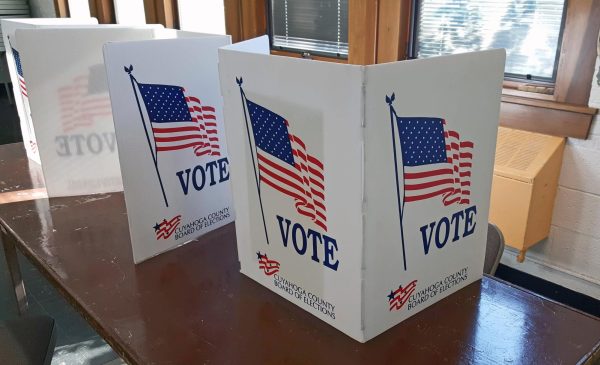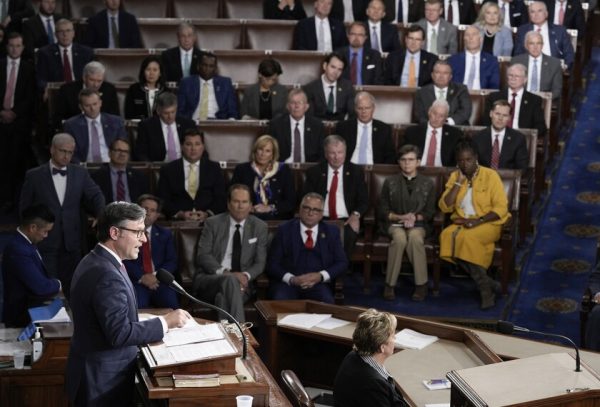Guide to the Supreme Court nomination process
SCOTUS
October 27, 2020
When disputes arise over the infringement of a person’s civil liberties, many Americans turn to the courts to help resolve the issue. In some extreme circumstances, a case will end up in the Supreme Court. Decisions here not only impact the individual parties of the case, but the nation as a whole.
In light of the recent passing of Supreme Court Justice Ruth Bader Ginsburg, the discussion over who should be the one to replace, or if someone should at all, has been brought to the forefront of U.S. politics. Regardless, with such controversy, the actual process to replace a Supreme Court Justice is often lost in the conversation.
Centuries ago, our Founding Fathers feared the centralization of power amongst a national government. When creating the U.S. Constitution, this issue was one of the critical aspects of discussion. After much deliberation, our Founding Fathers came up with the three branches of government: the executive, legislative, and judicial. When trying to understand the appointment and confirmation of a Supreme Court Justice, the judicial sections of the Constitution can offer clarity.
First, the overall grounds to a Supreme Court can be found in Article III, Section I of the U.S. Constitution. The section declares, “The judicial power of the United States, shall be vested in one supreme Court.” This part of the Constitution authorizes explicitly one Supreme Court; however, it does not mention how many justices serve on the Court. The lack of clarification is significant to note since the individual who is to appoint members of the Supreme Court does not have to fill the seat; it does not state that a specific number is required. Conversely, throughout history there has been a general president set to the expected number of Justices. Guidance for this issue can be found in the Judiciary Act of 1869, which stated that there should be nine total justices, including one chief justice and eight associates.
With the grounds of a Supreme Court and the guidance of how many justices are to serve on the Court, more information to the appointment and confirmation process of Justice are found in Article II, Section II of the Constitution. Commonly known as the Appointments clause, this section states, “and [the President] shall nominate, and by and with the Advice and Consent of the Senate, shall appoint […] Judges of the Supreme Court.” The clause establishes that the only individual with the sole power to nominate a Supreme Court justice is the United States President. It also acknowledges that the U.S. Senate must confirm the President’s appointment in order for the individual to become a Justice. While the confirmation in its entirety has not changed, the politics surrounding the appointments have.
In today’s standard, the confirmation process starts with the Judiciary Committee vetting the appointed Justice. With a simple majority of 12 votes, the nominee is approved. Once the Judiciary Committee reaches a simple majority, the appointed Justice then goes to the U.S. Senate floor to be voted on. After an open floor discussion, a simple majority of 51 votes is needed to confirm the appointed Justice. If there was to be a tie, the Vice President, whose role is to preside as President of the Senate, then can break it. If enough votes are reached, the appointed Justice is now confirmed to be a U.S. Supreme Court Associate Justice.
The confirmation process, though drastically impacted by the politica around, in the general sense, is relatively straightforward. In addition, as you will see in a subsequent article, the politics surrounding the appointment and confirmation, is what makes it at times, confusing.
For a more simplified understanding of the confirmation process, please refer to the cheat sheet below, as this process unfolds before eyes over the next few weeks.
Supreme Court Nomination Process:
- An individual, with no needed background, is appointed by the President
- The nominee then goes to the US Senate where is first voted on in the US Senate Judiciary Committee
- A majority vote (12), are needed to approve the nomination for the entire US Senate for consideration
- Then, with approval from the Judiciary Committee, an open discussion on the US Senate floor begins
- Once each member has chooses to use there time or not, the nominee is then put to a vote in front of the full US Senate
- A majority of 51 senators is need to confirm the nominee
- In a instance of a tie, the Vice President brakes it
- Finally, the appointed Supreme Court Justice is sworn in or rejected and the process starts over again with another nomination










